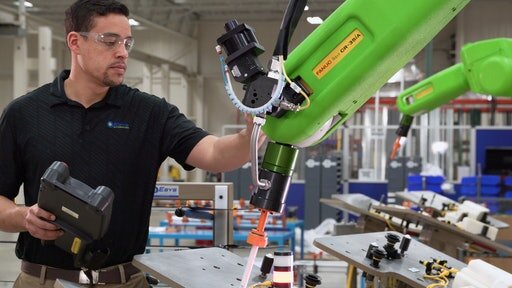The Fourth Industrial Revolution: Wearables and Robotics
/More—faster. That’s the pressure consumers are putting on the supply chain industry. We’re buying more products, and we want them now.
How are warehouses and supply chain companies stepping up to meet demand? The short answer: technology. The long answer: wearables, robots, and automation with a few common trends.
More Wearables and Robots
Wearable tech, like smart glasses, watches, and hard hats, are helping enterprises improve safety and productivity.
A recent Gartner report forecasted that global spending on wearable devices will reach $81.5 billion in 2021.
Similar market growth is expected with industrial robots. Since 2010, spending on industrial robotic arms and automation machines has increased 10% annually, and as of a few years ago, there were at least 2 million robots in use on factory floors, warehouses, and similar locations.
Advances in Wearable Tech
Continued improvements in AI, Internet of Things (IoT), augmented reality (AR), and 5G are expanding capabilities for automation and wearables.
Companies are taking advantage by using tools like TeamViewer, which they use to improve quality, speed, and safety in their logistics, manufacturing, maintenance, and operations.
“TeamViewer helps companies like DHL, Coke, and Airbus,” says Percy Stocker, TeamViewer’s executive vice president, AR Americas. “Using AR-guided workflows and ad-hoc video collaboration, companies can digitize and streamline their processes while offering more ergonomic and intuitive solutions to their frontline workers.
Safety-Driven Wearables
Wearable tech is being used in industrial applications to keep workers safer by giving feedback in real time as well as providing trend data that helps inform policies and best practices.
On-person wearables from companies like Guardhat, MākuSafe, Kinetic, and more are keeping workers and management informed to make safety a priority.
Growing Confidence in Privacy
As wearables have grown in popularity, concerns about privacy have had to be addressed. Companies offering wearable solutions are offering reassurances and data protections to ease hesitancy.
“We need to make sure the worker is very comfortable with our solution,” said Heidi Lehmann, co-founder and chief commercialization officer of Kenzen. “This begins with the actual comfort of the device when worn by a worker, to worker privacy and making sure the worker understands that the platform has been designed with their privacy in mind.”
With Kenzen’s platform, only workers can view the details of their personal health information, and safety managers and other EHS leaders only see what’s necessary to keep the worker safe.
Measurable Improvements in Efficiency
Wearables can help workers move faster (while staying safe) and provide data that proves changes in efficiency.
Ilhan Kolko, chief product officer at ProGlove, maker of wearable wireless barcode scanners, said, “Wearable scanners enhance processes at large because they easily cut the total scanning time in half. Aside from the massive time gain, workers always have their hands free, which is tremendous relief when you load or unload a truck.”
According to Kolko, one ProGlove customer increased efficiency by as much as 20%.
Robotic Automation
The use of robots for automation in industrial applications has been growing, and not just because of COVID-19. Enterprises are looking for repeatable, mundane tasks to entrust the robots with. The technology has become more affordable for small and medium sized businesses, speeding up adoption.
As robots take on more work, that leaves questions for humans and our jobs. Which brings us to our next trend.
Upskilling Workers
Robots taking on certain tasks means the work required of humans will shift to higher-skilled work—including working with and on the robots.
“Some companies may be able to upskill their workforce somewhat to be able to handle these robotics,” said Robert McElmurry, executive director – global accounts, FANUC America. “One of the benefits of that is these types of jobs tend to be higher paying positions. If you have people who are upwardly mobile in the warehouse, this is potentially a nice career path.”
Workforce needs will change, and the industry will have to change with them.
Improvements in Computer Vision
Advances in camera technology, AI, and data processing are helping expand what robots can do...and see. As companies invest in tackling visual data and processing, robots can do more in less time with better “sight.”
It’s an exciting, fast-paced time to be in industrial enterprises—applying new technologies to streamline operations, improve worker safety, and boost the bottom line.
May the fourth industrial revolution be with you.



